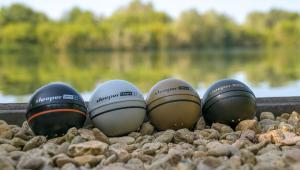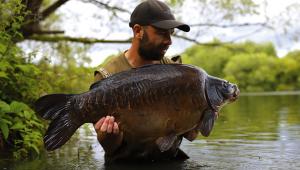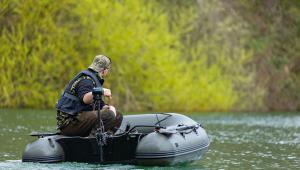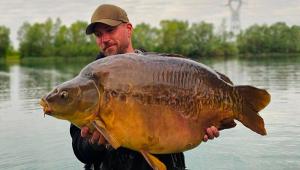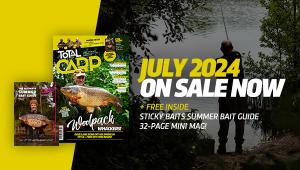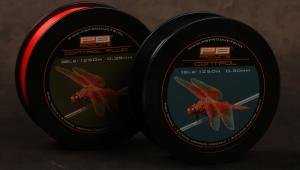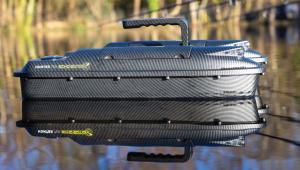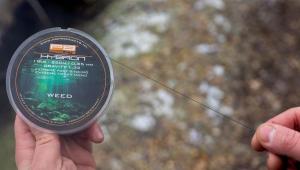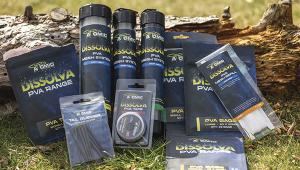Leon Bartropp's TOP 5 TIPS FOR SPRING!
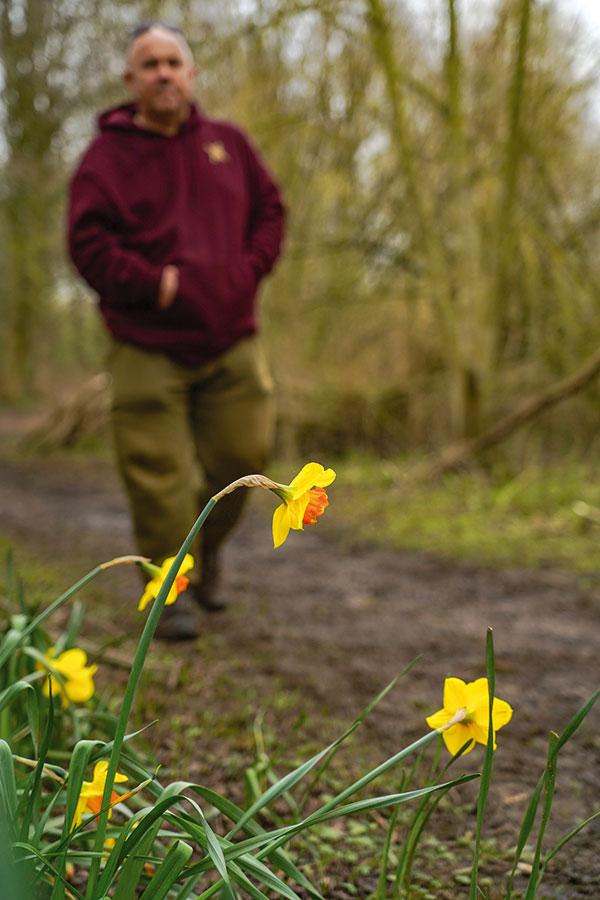
Spring has to be one of the best times to be out on the bank; the carp are waking from their winter slumber, the lakes are coming to life and your chances of catching, after what has been an especially wet and cold winter, are now once again pointing in the right direction. Don’t be fooled though, spring can also come with its challenges; the water is still pretty cold and weather changes can quickly influence the carp’s behaviour, making it tricky to pin them down. In this feature I am going to shed some light on a number of aspects I feel really have benefited my spring fishing, and what I have learnt and put into practice over the years.
1. Spring Spotting
With the daylight hours increasing and the water temperatures slowly starting to rise before spawning, you will start to notice the carp will become a lot more mobile, exploring areas they may have been neglecting over the colder months. These could be areas of shallow water, or reed beds that hold the heat when the sun shines down on them
Carp at this time of year also search out areas to remove any parasites/leaches they have collected over the winter, so looking for ‘rubbing zones’ and baiting close to these spots will no doubt have carp visiting. I have often found any submerged tree trunks, old metalwork, or even large rocks in the edge to be known rubbing zones. A tell-tale sign of these areas are carp craters; areas of depression that the carp have dug out due to regular flanking on the lake bed and moving of any debris/small gravel or silt. If you can spot these ‘craters’ you’re on to a winner.

Another key spring zone that always attracts the carp pre-spawning are the clay areas of the lake. Quite often during the early spring period you will find carp with large, light-coloured marks up their flanks; this is clay. Why do they do this? Clay is rich in minerals, which carp can absorb through their skin; as they look to build up their energy and immune systems ahead of spawning, they cover themselves in clay. So, if you put two and two together, find the clay and the carp won’t be far away!
Equally, spotting fish at first and last light are often the key giveaways in the spring as to where they are feeding. I have found the carp to be very mobile during the daylight hours, which does make them harder to catch on conventional tactics. You can chase them around all day with zigs and singles, but quite often by monitoring their habits at first light and in the evening, you can settle on zones where you know they are getting their heads down for a feed during the hours of darkness.
2. Don’t Overdo It!
This time of year can fill you with a false sense that the carp are eating like gusto! Don’t fall into the trap of pilling in the bait and thinking you’re going to have it off; a gently, gently baiting approach is far more effective early spring, when less bait but lots of attraction will bring you better results. Save the heavy baiting for after spawning but look to maximise your bait attraction and introduce small amounts in good areas where the carp are visiting.

Baits coated in nutrient-rich, feeding and appetite stimulants are so beneficial during the spring. The Pro-Stim Liver combined with Liver Powder delivers a lot of natural attraction, whilst benefiting the carp’s digestive system and providing value amino acids and soluble protein that help build and sustain growth. I like to prep a bit of bait with the matching Pro-Stim Bait Booster and a healthy dose of Liver Powder, giving them a good week to absorb the nutrients ahead of my trip. By prepping a small quantity at a time and keeping them in separate 1kg bags, I can easily monitor how much bait I am introducing without going over the top and putting in too much. In general, a three-bait stringer, followed by a dozen or so pouchfuls of bait roughly in the area is enough in my opinion to create a zone bursting with food signals that the fish cannot resist.
Quality over quantity is a term that can certainly be used during the spring; carefully applied bait will catch you more carp, but think, observe and make decisions based on what you see before committing bait to any areas of the lake.
3. Brights For Roving, Food Baits For Spot Fishing…
Most anglers will tell you that bright pop-ups are the way to go during the spring, but I have caught as many spring carp on match the hatch style food baits over the years as I have on bright ones. This stems back to thinking carefully about your approach and the best times to use each method.
I generally prefer bright pop-ups on short sessions or when I am moving my rods around regularly, or staying mobile to try and catch carp on the move. Technically, this could also be classed as lure fishing; it certainly works, but I prefer to use the real bright, boosted pop-ups on their own and position them in areas I can see the carp moving around during the daylight hours. Once again, using the polarising glasses to spot the carp and pinpoint those zones they are frequenting is the best way in determining where to position these super- attractive boosted bright ones!
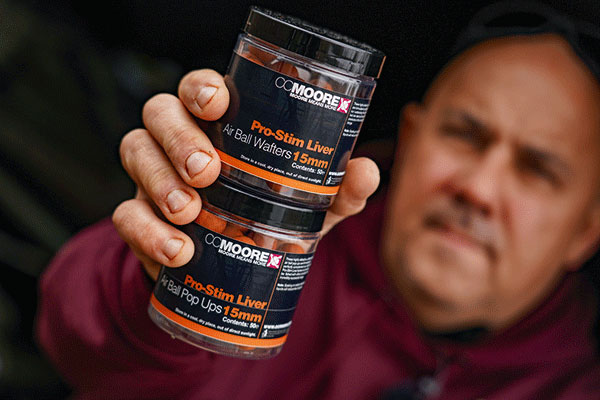
When it comes to ‘spot’ fishing in the spring, where I will be applying bait, I do prefer to fish a boosted match the hatch style pop-up or wafter, depending on the lake bed I am fishing over. Clean spots I will opt for a wafter, and in those areas of low-lying weed a pop-up is best. Once again, keeping an eye out during the hours of darkness or during the first light feeding period will give these zones away. I will then make the decision on whether to use pop-ups or wafters based on when I come to investigate these areas during the day when the fish have moved off and are cruising around the pond.
As a rule of thumb, smaller, firmer spots I will bait tighter and fish wafters and larger, generally siltier/weedier zones I will bait slightly wider and fish pop-ups. Using a helicopter style setup for both presentations ensures I can stay adaptable and fish the same lead arrangement even if the spots are completely contrasting. Helicopters also allow me to stay mobile and rove about in the day, and switch to suit my spot choice at night by simply adjusting the top bead to suit.
4. Monitoring The Weather For Windows
Weather in the spring is probably most influential on the carp’s behaviour in comparison to any other time of year; we usually start to get those first ‘warm’ winds and with the carp actively moving about and being mobile, they are more inclined to follow changes in wind direction. Keeping a close eye on the forecast for any sudden changes is best and where possible, reacting to them can be hugely rewarding.
Spring can also come with cold periods and freezing night-time temperatures, but equally, scorching hot days and periods of warm weather; so, nothing is ever set in stone. The key with all angling is to be adaptable and make changes based on the conditions.
5. Preparing For The Season Ahead
I like to do a lot of campaign fishing throughout the months of spring, summer and autumn, so a lot of the preparation for that is done throughout the spring period. This is the time of year, especially when joining or starting out on a new lake, to keep an open mind and learn from what you see. It is also well worth storing any info that you feel is valuable away in the locker for the following spring if you intend to fish a lake for a few years.

This is also the time of year I will start planning for the summer months, investigating areas and maybe trying to work out some spots/zones that I think would be a good option to bait and target come the summer/autumn months later in the year. You can quickly build a picture of the areas that get fished and receive pressure regularly and those that are less so which may be worth prebaiting and investing some time in. I also like to use spring as a way to learn as much as possible about as many swims as I can on as many banks as I can (anglers allowing). This helps me work out which zones/pegs are worth fishing in different conditions and minimise any disturbance if I were to move on to fish in an area already having the prior knowledge.
I hope a few of these tips will stand you in good stead this spring and enjoy being out there!
Name: Leon Bartropp
UK PB: 57lb 3oz!
Occupation: Social media marketing director
Sponsors: CC Moore, Avid
- Log in or register to post comments
